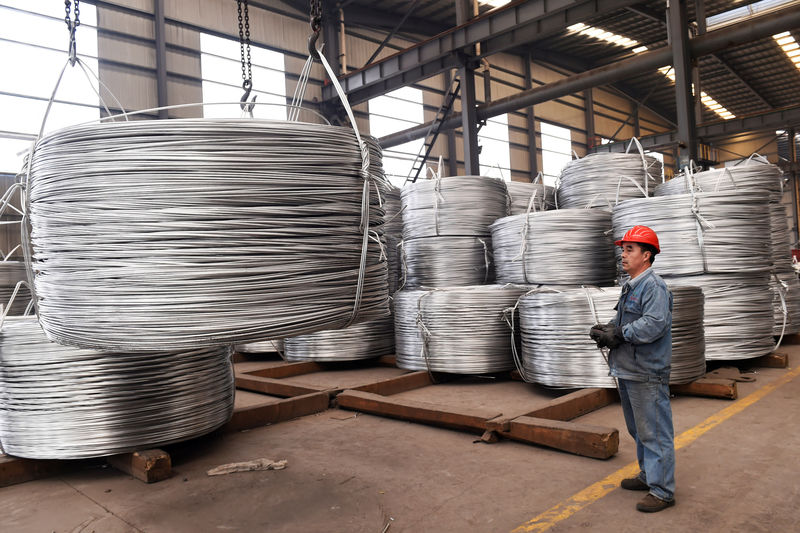(Bloomberg) -- Aluminum faces a “doomsday scenario” if the U.S. proceeds with sanctions on United Co. Rusal in October, according to Wood Mackenzie Ltd., which says prices could exceed their seven-year highs in April.
The market outside China is already in deficit, and would go “into a massive shortage” if a producer the size of Rusal can’t supply metal, Julian Kettle, vice chairman of metals and mining, said in an interview in Singapore. “Prices will move to a level where you will get demand destruction” as buyers start switching to alternative materials, he said.
Aluminum spiked in April after U.S. sanctions on Rusal upended global supply chains, which were already under pressure from lower output at Alunorte in Brazil. Billionaire Oleg Deripaska is negotiating with U.S. authorities on a plan that will lift the threat of sanctions before an Oct. 23 deadline, and Kettle forecasts prices could top their April level if his measures don’t satisfy the U.S. The metal closed at $2,537 a metric ton around the middle of that month.
“In April, it was a knee-jerk reaction. This time, if Rusal can’t comply, it’s not because they haven’t tried,” said Kettle. “It’s because they can’t comply, and that’s the reality.” Aluminium will move “quite swiftly” above $2,500 in that scenario, especially as Rusal also produces alumina and bauxite, he said.
Prices in London gained 1.2 percent to $2,065 a ton on Friday before trading at $2,052 after workers at Alcoa (NYSE:AA) Corp.’s giant alumina operations in Western Australia voted to extend their month-long strike, posing a further threat to global supplies and underscoring how sensitive the market is to disruptions.
Trade Wars
Supply shocks may be mitigated by lower demand as escalating trade tensions damp global growth, said Kettle. “People will stop consuming metal as much as they did before because of trade restrictions, because economic activity will be lower, because of trade wars,” he said on Thursday.
Even without the impact of Rusal sanctions, prices should recover in the fourth quarter, and hover at $2,200 to $2,300 in 2019, said Kettle. An expected supply deficit for the next two to three years, rising costs from alumina and bauxite, and potential dollar weakness will push up prices, he said.
Other points from the interview:
- Copper is WoodMac’s favored metal because shareholders aren’t giving a mandate to mining companies to invest in supply. “Built into the DNA of copper is rising prices over the medium term,” Kettle says.
- WoodMac is “quite conservative” on the outlook for electric vehicles and favors hybrids.
- Lithium is moving into a significant surplus, with supply set to triple in the next five years while demand doubles.
- Cobalt will likely be oversupplied from 2019, with prices probably around $42,000 a ton over next three years. That compares with about $63,000 now on the London Metal Exchange.
- Nickel is in deficit, and prices over next two to three years are likely to rise to $28,000 a ton, versus about $12,300 now.
(Adds latest price in fifth paragraph.)
To contact Bloomberg News staff for this story: Krystal Chia in Singapore at kchia48@bloomberg.net;Martin Ritchie in Shanghai at mritchie14@bloomberg.net
To contact the editors responsible for this story: Jason Rogers at jrogers73@bloomberg.net, James Poole
©2018 Bloomberg L.P.
